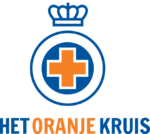A serious subject like safety requires professionalism in everything. Safety is vital for a well-functioning organisation. That starts with awareness of the risks and the importance of prevention and assistance. In this, we are sparring partners and teachers. To fulfil our task well, we make sure we are up to date with the latest insights and the latest techniques. Our professionalism manifests itself in unburdening and guaranteeing safety: from developing scenarios to keeping certification up to date.





